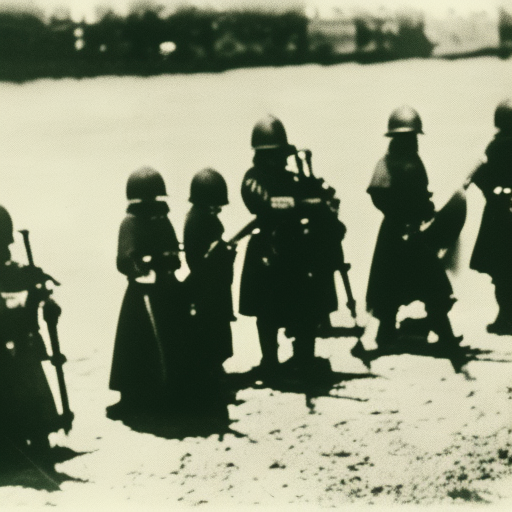Summary:
The Second Hundred Years’ War was a series of conflicts between England and France that lasted from 1689 to 1815. It was characterized by intermittent periods of peace and war, with each side seeking to assert its dominance over the other. The war had significant political, economic, and social consequences for both countries, ultimately reshaping the balance of power in Europe.
Background:
The Second Hundred Years’ War was a continuation of the conflicts that began with the Hundred Years’ War in the 14th century. The two nations had a long history of rivalry and territorial disputes, and the war was fueled by a desire for supremacy in Europe. The war was also influenced by religious tensions, as England was predominantly Protestant while France remained Catholic.
War of the League of Augsburg (1689-1697):
The first major conflict of the Second Hundred Years’ War was the War of the League of Augsburg. It began when a coalition of European powers, including England, declared war on France to prevent its expansionist ambitions. The war saw several battles and sieges, but ultimately ended in a stalemate with the Treaty of Ryswick in 1697. The treaty reaffirmed the status quo and restored territorial boundaries.
War of the Spanish Succession (1701-1714):
The War of the Spanish Succession was a pivotal conflict in the Second Hundred Years’ War. It was triggered by the death of the Spanish king, Charles II, and the subsequent dispute over his successor. England, Austria, and the Dutch Republic formed an alliance against France and its candidate for the Spanish throne. The war saw major battles, such as Blenheim and Ramillies, and ended with the Treaty of Utrecht in 1714. The treaty recognized Philip V as the Spanish king but imposed limitations on the French monarchy, ensuring a balance of power in Europe.
Seven Years’ War (1756-1763):
The Seven Years’ War was a global conflict that involved multiple European powers, including England and France. It began as a colonial dispute between the two nations in North America and quickly escalated into a wider conflict. The war saw significant battles, such as the Battle of Quebec and the Battle of Minden. In the end, England emerged victorious, gaining control over several French colonies and solidifying its position as a global maritime power.
French Revolutionary and Napoleonic Wars (1793-1815):
The French Revolutionary and Napoleonic Wars marked the final phase of the Second Hundred Years’ War. These conflicts were a direct result of the French Revolution and the rise of Napoleon Bonaparte. England, along with other European powers, formed coalitions to contain and defeat France. The war saw major battles, including Trafalgar and Waterloo. It ended with the defeat of Napoleon and the signing of the Treaty of Paris in 1815. This treaty reshaped the map of Europe and established a new balance of power.
Consequences:
The Second Hundred Years’ War had profound consequences for both England and France. It solidified England’s position as a dominant global power, while France suffered significant territorial losses and a decline in influence. The war also had economic consequences, as both nations incurred massive debts to finance their military campaigns. Additionally, the war had social impacts, fueling nationalism and shaping the identities of both countries.
In conclusion, the Second Hundred Years’ War was a series of conflicts between England and France that spanned from 1689 to 1815. It had significant political, economic, and social consequences for both nations, ultimately reshaping the balance of power in Europe. The war consisted of several major conflicts, including the War of the League of Augsburg, the War of the Spanish Succession, the Seven Years’ War, and the French Revolutionary and Napoleonic Wars. Each conflict had its own unique dynamics and outcomes, but collectively they shaped the course of European history.












